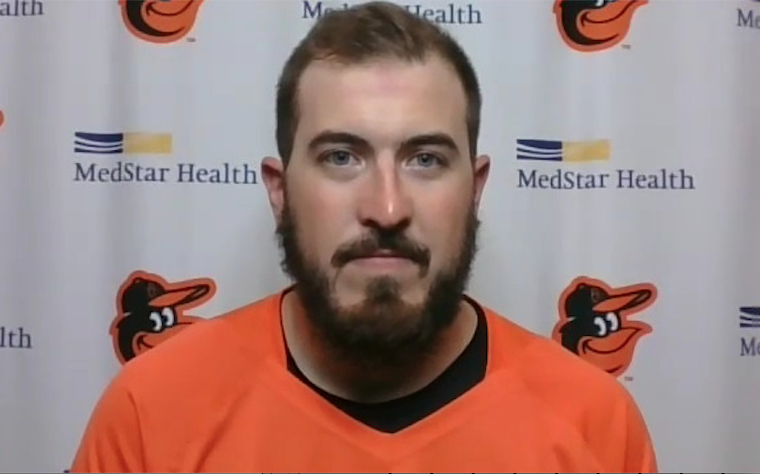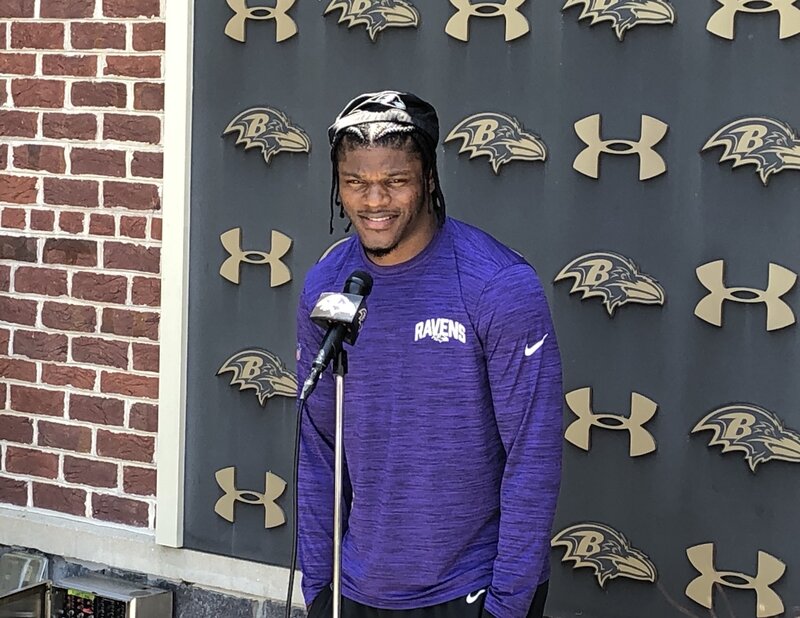If you missed the news late Saturday night that the Orioles were calling up pitching prospect Zac Lowther, don’t feel bad.
The 24-year-old lefty had already gone to bed when he received the call, admitting the news was “a little surprising” after beginning the regular season at the alternate training site in Bowie. But make no mistake, the club’s MLB.com No. 11 prospect and 2017 second-round pick from Xavier University is confident he belongs in the majors after posting a career 2.26 ERA over 59 starts and 326 innings in the minor leagues.
“I feel like I’m really ready, just being able to see the competition last year at Bowie and then this year again and with the outings in spring,” said Lowther, who logged four scoreless innings in two Grapefruit League appearances in March. “I think just the buildup was really good this year for me and knowing what to expect when you go to your second big league camp and you’re around the guys that have done it before.”
Having not yet named a starter for Wednesday’s game against the New York Yankees, manager Brandon Hyde said Sunday that Lowther would initially be available out of the bullpen after Saturday’s poor start from veteran lefty Wade LeBlanc, who was designated for assignment to make room on the 26-man roster. Of course, the goal is for Lowther to pitch his way into a long-term spot in the major league rotation.
Such aspirations have been complicated by the COVID-19 pandemic that canceled the 2020 minor league season. While pitchers Bruce Zimmermann, Dean Kremer, and Keegan Akin all logged at least limited time pitching at Triple-A Norfolk in 2019 before making their major league debuts last season, Lowther hasn’t pitched above Double-A Bowie, instead receiving work at the alternate training site beginning last September. Given general manager Mike Elias’ preference for prospects not skipping levels during a lengthy rebuild, most weren’t expecting Lowther to debut until at least logging some innings with the Tides, who begin their 2021 season next month.
“The lost Triple-A year last year is just different for everybody,” Hyde said. “Some of these guys might be getting here a little bit quicker than normal and not have the Triple-A at-bats, innings on the mound, et cetera that you normally would want just because last year was a punt in the minor leagues. It is what it is for right now. We feel good about how Zac was throwing the ball at the alternate site, and we’re going to give him an opportunity.”
Though not the typical hard-throwing prospect one has come to expect in today’s game, Lowther has used a combination of a high-80s to low-90s fastball, an above-average curveball, and a solid changeup to find success at every level at which he’s pitched in the minors. Despite having not competed in an official regular-season professional game since registering a 2.55 ERA, 9.4 strikeouts per nine innings, 3.8 walks per nine, and only eight home runs allowed in 26 starts covering 148 innings for the Baysox in 2019, Lowther sees value in the way Baltimore’s player development has been forced to adapt.
The 6-foot-2, 235-pound southpaw has been throwing on a “normal” schedule, pitching every five or six days ramping up for the start of the Triple-A season and most recently allowing one run and striking out five in four innings in a game against Washington’s alternate site team. The difference has been the absence of daily games with the Orioles and other organizations developing prospects from “concentrate” rather than relying on conventional minor league seasons.
“They integrated a lot of the video that we have and used a lot of their developmental tools very well,” said Lowther about the alternate site the last two years. “It made our work intentional but also consequence-free, so we were able to grow and try new things that might work in the minor leagues or they might not. But we’re ultimately trying to get to Baltimore, so we were trying a lot of different things there to get us here and get us prepared for Baltimore.
“I think there was a benefit to it just in the developmental sense for a lot of prospects. I know that the growth during games can be tricky because you’re out there for 140 games for a minor league season. When you don’t have to play every day, it helps your mindset and your work become more intentional and more focused instead of being result-oriented. Being able to do that kind of gives you a little leeway to struggle and not have the consequences because baseball is a game of struggles. It was a challenge, for sure.”
How that will translate for a talented pitcher now flipping more of a competitive switch in the majors will be fascinating to watch, especially with other prospects on the horizon who’ve faced similar disruptions to their development.






























